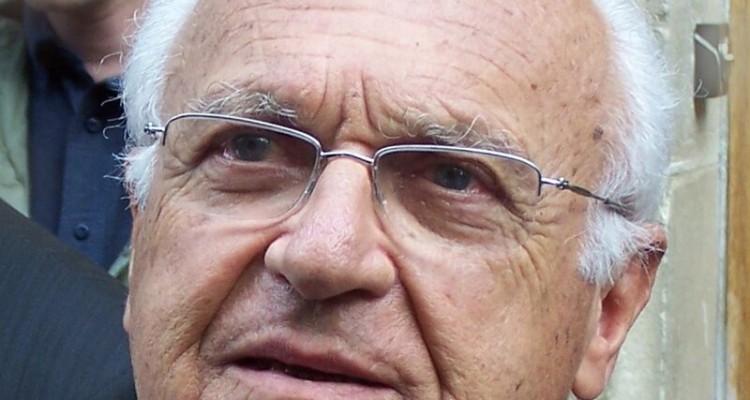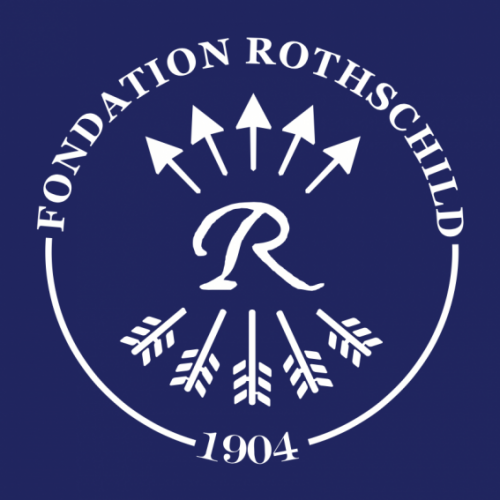How can we explain the convergence, apparently so spontaneous on American campuses, between anti-racism and anti-Zionism? Following the radicalization of the civil rights movement, Christian Voller traces the genesis of the link between Black Lives Matter and Free Palestine. His story takes us through Brooklyn, where the encounter between Black people and traditionalist Jews sometimes took the form of a gang war.

Within days of the murderous pogroms of October 7, 2023, pro-Palestinian protests began to form on U.S. colleges and universities, quickly growing and developing an international reach. Alongside the existing Palestine Solidarity Committees, anti-racist groups that had previously focused primarily on the Black cause set the tone. Thus, the liquidation of the Jewish state on the Mediterranean Sea apparently became a basic demand for numerous initiatives organized under the slogan “Black Lives Matter,” which now expressed themselves early, radically, and often in extremely bad taste. Listening to their analyses and appeals, one gets the impression of an almost natural connection between the struggles of Black people in America and those of the Arabs in the former British Mandate of Palestine. This connection between anti-racist activism and anti-Zionism is not new, but it is shaping current protests and debates in new ways in terms of form and content, increasingly in Europe as well.
This connection is not self-evident, and anyone who wants to understand it should turn their attention away from current events in the Middle East for a moment and take a look at the 1970s. More precisely, the long seventies that began in the United States on July 2, 1964, with the signing of the Civil Rights Act. This bill stands for the lasting success of the civil rights movement, but its signing also sealed its end as a civil rights movement. Legal equality had been achieved, and while racial discrimination was by no means a thing of the past, it was outlawed. What could be achieved within the liberal system had been achieved and now had to be enforced by the police. For many protagonists and supporters of the movement, the cause that had brought them together had been realized, and the protests lost their impact. Others, however, doubted with good reason that full equality could be achieved in a white majority society. Racism seemed too deeply rooted in that society and its institutions. Moreover, American-style liberal capitalism would reliably ensure that those without wealth would remain poor for generations to come. For the descendants of slaves, this meant a significant structural disadvantage in a society where a dishwasher could only exceptionally become a millionaire, and where old money otherwise determined fortunes and politics.
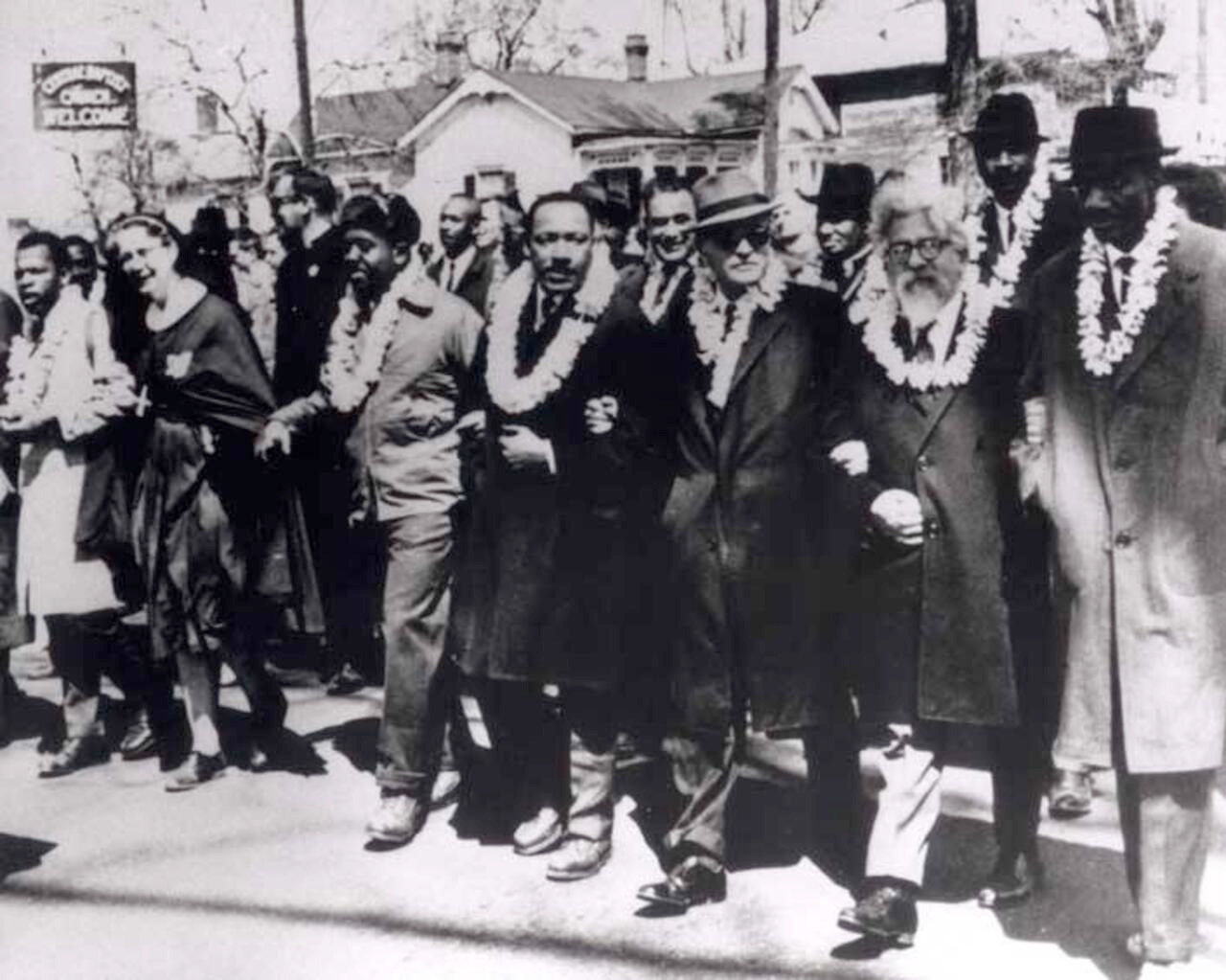
Against this backdrop, the civil rights movement was radicalized in terms of identity politics, which would shape the restless spirit that gripped the US in the wake of the Vietnam War. The Black Power groups that emerged were committed to social revolution, abhorred liberalism, and what had begun as a civil rights movement, and thus a genuinely liberal project, continued in militant activism. White college students, many of them Jewish, showed solidarity and formed the Weather Underground; parts of the hippie movement took up the fight as the White Panthers alongside the style-defining Black Panthers; and overall, the actions directed against the government, the police, and U.S. imperialism initially found considerable support among liberal Americans. Liberal Judaism, in particular, which had already proved an important ally during the civil rights movement, sympathized with the struggle of Black people, with whom it seemed to share a common history of disenfranchisement and oppression. But the alliance was fragile.
This was evident in the impoverished neighborhoods of major American cities such as New York, Chicago, Detroit, and Boston. Different population groups that in the late nineteenth century had been seen, and also had seen themselves, as Italians, Irish, Poles, Jews, Russians, Germans, and so on, had been largely absorbed into the white social class to which only White Anglo-Saxon Protestants had previously been allowed to belong. Their communities had largely become a thing of the past and folklore, a feat of adaptation that paid off for the vast majority. The exodus from the cities to the suburbs began. Whole neighborhoods were abandoned, leaving behind especially the poor and those who were unwilling to fully assimilate into the majority population and thus become un-hyphenated Americans. The result was an alienation between assimilationists and traditionalists that was particularly harsh in the Jewish milieu. While assimilation for a significant portion of the Jewish population was directly linked to social advancement and moving to better neighborhoods, representatives of the inner-city communities, many of them Holocaust survivors, refused to give up their traditions and remained recognizable as Jews through their language, mannerisms, and clothing. They were significantly poorer than the majority of assimilated Jews and attracted antisemitism. In the neighborhoods where they lived, however, they were well organized. They were overrepresented in the school system, well integrated in the administration and police force, and many apartment buildings were owned by Jewish families.
When the great migration from the South to the North began, and millions of Black people sought fortune and livelihood in the industrial metropolises of the North, the newcomers encountered these Jews in many places. They often constituted the largest uniform group of whites left behind in impoverished neighborhoods, and they appeared wealthy from the perspective of those who had come penniless from the South. It was precisely those who had refused to be absorbed into the white majority society who became its direct representatives. This can be seen paradigmatically in Harlem or Brooklyn, New York neighborhoods that were distinctly Jewish but also had a high proportion of Black people, which had increased sharply since the 1950s. Living together in close quarters in increasingly blighted neighborhoods caused tensions early on, and a specific antisemitism took hold that targeted local Jews as white, or at least potentially white. The Jews, the argument went, could be assimilated into the majority population at any time, a privilege denied to Black people because of their skin color.
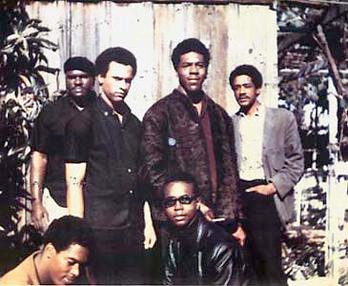
This milieu-specific antisemitism, linked to specific experiences that could not be generalized, is well documented. The Harlem of James Baldwin’s novels and essays, for example, which quickly became a metonym for the “ghetto” in the U.S., is populated by grotesquely exaggerated secondary characters who are all too easy to decipher as antisemitic caricatures, but at the same time must be understood as an authentic expression of the Black experience of life in Harlem and similar neighborhoods. Baldwin never denied the existence of a specifically Black antisemitism, but he did not want to be seen as one of its representatives. In 1967, he discussed the phenomenon in an essay entitled “Negroes Are Anti-Semitic Because They’re Anti-White”. In his essay, Baldwin attributes Black antisemitism primarily to the experience of being exploited in the “ghettos” by Jews who had become white in America: “In the American context, the most ironic thing about Negro anti-Semitism is that the Negro is really condemning the Jew for having become an American white man.”[1] Successful assimilation into white America thus becomes the motif of a resentment that Baldwin both reproduces and critiques, the key argument being that the suffering endured by Jews as a group was an essentially European experience, unlike the oppression of Black people, and therefore not truly American: “It is not here, and not now, that the Jew is slaughtered, and he is never despised here, as the Negro is, because he is an American. “[2] Baldwin ultimately counters Black antisemitism with his own Christian-based universalism and rejection of all racism, whose conciliatory perspective is the successful integration of an American identity in which the suffering and achievements of Black people would finally be recognized.
This emphatic commitment to the melting pot of America was inspiring to many, but it also brought Baldwin harsh criticism. In his influential pamphlet The Crisis of the Negro Intellectual, Harold Cruse, for example, attacked Baldwin in 1967 as a “rather innocent and provincial intellectual”, bending “over backwards to avoid criticism of Jews while pretending to be angry with whites”.[3] And he accused him of downplaying the power of Jews in America. If not as a “Jew-lover,” then certainly as an “apologist for the Jews,”[4] Baldwin allowed himself to be drawn into a conspiracy in which the Jews were working to integrate Black people in order to hinder their struggle for their own identity, culture, and ultimately nation, while they had created that very thing for themselves. As rival “nationalisms” within the U.S., whose common fate is that they cannot and will not be absorbed without trace into the integrated white America, Jews and Black people become antipodes for Cruse, whose struggle for their own collective identity is essentially modeled agonistically. However, while Jewish identity as a cultural identity appears clearly contoured for Cruse, and with the founding of the state of Israel in 1948 a homeland was created that also gave the Jews within the United States great assertiveness, both the cultural unity of the Black community and their claim to their own nation state remained unrealized, with the demand for integration and assimilation of Black Americans – also and especially advocated by American Jews – standing in the way of the realization of these ideals.
Unlike Baldwin, whose literary treatment of antisemitic images and tropes is often fractured, Cruse presents a narrative that is antisemitic in its entirety. Against the backdrop of the ethnic pluralism he advocates for, he can only perceive the demand for integration in the mode of assimilation of Black people into the American majority society as a betrayal of the cause of a decidedly Black American identity and culture, and it is then above all American Jewry that Cruse identifies as the sinister power that encourages this betrayal, by the very fact that it has accompanied and actively supported the integration efforts of Black people in the course of the civil rights movement in solidarity. What strikes me as decisive here is not so much the antisemitic resentment that Cruse obviously harbored as an individual, and which runs like a red thread through his brilliant polemic, but rather that this resentment emerges in the context of a fundamentally different view than Baldwin’s of what the emancipation of Black people in America would ultimately mean. Where Baldwin’s universalism remains rooted in the ideal of integrating an American identity, Cruse rejects this integration in favor of ethnic pluralism.
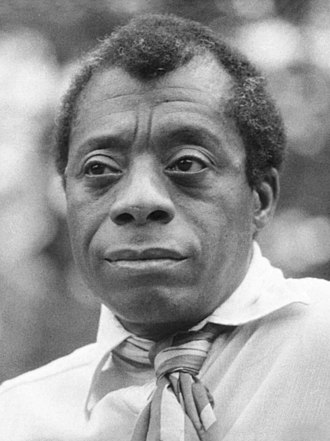
Cruse’s antisemitism did not go unnoticed and was criticized early on[5], but his diagnosis of the crisis was groundbreaking. And while Baldwin’s “innocent” universalism seemed romantic and outdated in the face of growing Black-white tensions, the ethnic pluralism advocated by Cruse became the paradigm of identity politics agitation within the Black Power movement. Black nationalist groups and the notoriously antisemitic Black Muslims quickly gained influence in the movement, and the anti-Jewish resentment found in much of the movement’s literature had an impact on those Jews who were recognizably Jewish and also on those who lived among the Black community, which did not apply as such to the assimilated Jews in the suburbs. In the late 1960s, the U.S. experienced a wave of inner-city violence in which anger against the “white exploiting class” in integrated neighborhoods was regularly vented against Jews and their property.
This situation led to the founding of the Jewish Defense League in Brooklyn in 1968, a group that is almost forgotten today, but not unimportant for the history of Judaism in the United States. Grouped around the charismatic Rabbi Meir Kahane, who represented a peculiar and deeply American blend of cultural conservatism, militant assertiveness, and Jewish identity politics, a milieu of young Jewish men emerged that was decidedly militant and often armed. The fact that Kahane had obviously borrowed his idea from the Black Panthers, from whom he borrowed not only his group’s logo (supplemented by a yellow star) but also considerable parts of his rhetoric, earned him the name Panther Reb. And his men, with their Jewfros, leather jackets, and berets, confidently imitated the Panther style. At the same time, however, it was the urban Black Power groups with whom they were permanently at odds from the outset. The reason for this had less to do with Kahane’s racism, which only came to the fore in the 1980s, albeit in Israel, than with local conflicts that arose, for example, over school policy. The now predominantly Black neighborhoods were to be taught by Black teachers, an initiative that enjoyed great support among liberals and liberal Jews. However, it conflicted with the life and career plans of those teachers who had previously served in Brooklyn and demographically similar neighborhoods, the majority of whom were Jewish. Kahane took their side and made himself the mouthpiece of an economically backward, traditionalist Jewish milieu, in whose name he eloquently and classistically polemicized against the Jewish establishment. At the same time, he became a militant advocate of Jewish identity politics, which could be and often was understood as racist, since the Jews whose self-assertion he sought to organize were addressed by the Black Power activists as white and thus as part of the majority society that was to be fought as racist.
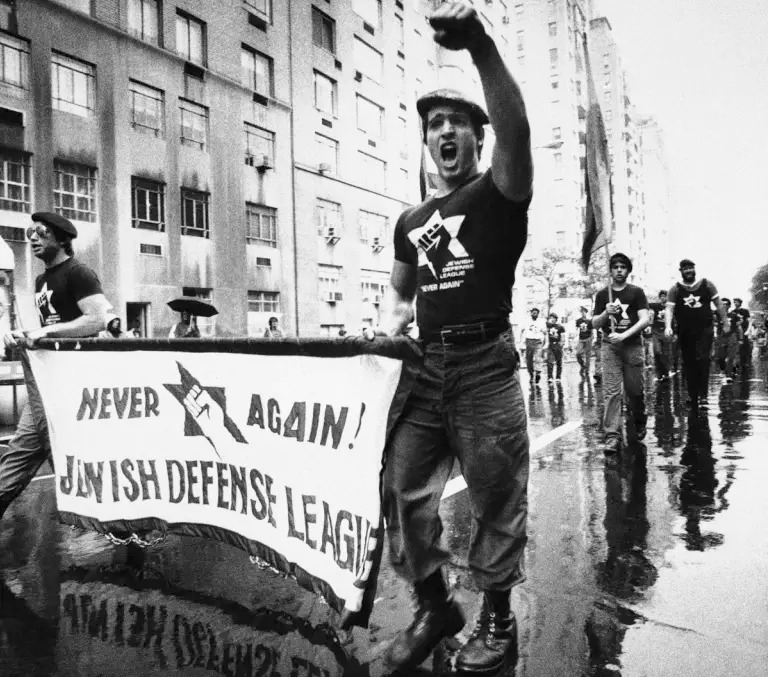
In the course of these disputes, racist remarks were repeatedly made, but the anti-racist polemics, ostensibly directed against the white oppressors, also regularly had antisemitic undertones and in some places tipped over into outright antisemitism. This gave Kahane the opportunity to escalate the tone, and the effects of the militant Judaism he sought to establish were felt most keenly by those Black people who had to share quarters with his Chayas (Yiddish: beasts). The alliance between American Jews and Black Americans that had been forged in the struggle for civil rights in the South threatened to break down in New York. In addition, Israel’s victory in the Six-Day War had suddenly brought Zionism into the focus of anti-imperialist agitation, which posed a problem for many left-wing Jews. Quite a few of them later found themselves in the ranks of the neo-conservatives. The Black Power groups, on the other hand, sought to join forces with those Arabs who seemed to suffer from the same whites as their ‘brothers’ in the major US cities, namely the Jews. The racist and antisemitic prejudices that had previously existed in both groups thus escalated into open hatred, which at the end of the 1960s erupted in a series of violent clashes between Black and Jewish militants that attracted little attention in Europe and left a rather faint memory in the minds of Americans. They were not without consequences, however.
In the early 1970s, Kahane abandoned his project of radicalizing American Jews in terms of identity politics and called for a collective Aliyah, or “return,” to Israel: “Time to go home” was the title of his landmark pamphlet from 1972. He began a second political career in Israel, where he was so radical and regularly racist that he was expelled from the Knesset and his Kach party was eventually banned. Integration did not succeed exactly where it should have, according to the criteria of identity politics. And so Kahane became the Arab-hater in Israel that he was – revered by a relatively small, radical following, banished from the political stage. The battle he waged, however, remained an American one. Deeply rooted not in liberal Israel but in the Brooklyn of the 1960s, Kahane found it impossible to fit into the political landscape of the Jewish state, and this remains true today for his followers, many of whom are immigrant Jews from the US. Today, the ideological legacy of the Panther Reb is administered primarily by the armed and extremely aggressive settlers of the West Bank, of whom anyone who denounces the violence of “the settlers” speaks (or should speak): Kahane was Right! was and is their rallying cry. In Israel, however, the Kahanists were always a radical, largely isolated splinter group with whom no one who cared about the country’s political culture wanted anything to do. It was only Benjamin Netanyahu who sought their proximity out of power-political calculation, and at the latest since the appointment of Itamar Ben-Gvir, whose Otzma Yehudit party is in the direct tradition of Kahane’s banned Kach party, as Minister of Security, there has been talk in Israel of a return of Kahanism and warnings of the dangers that would accompany government participation.
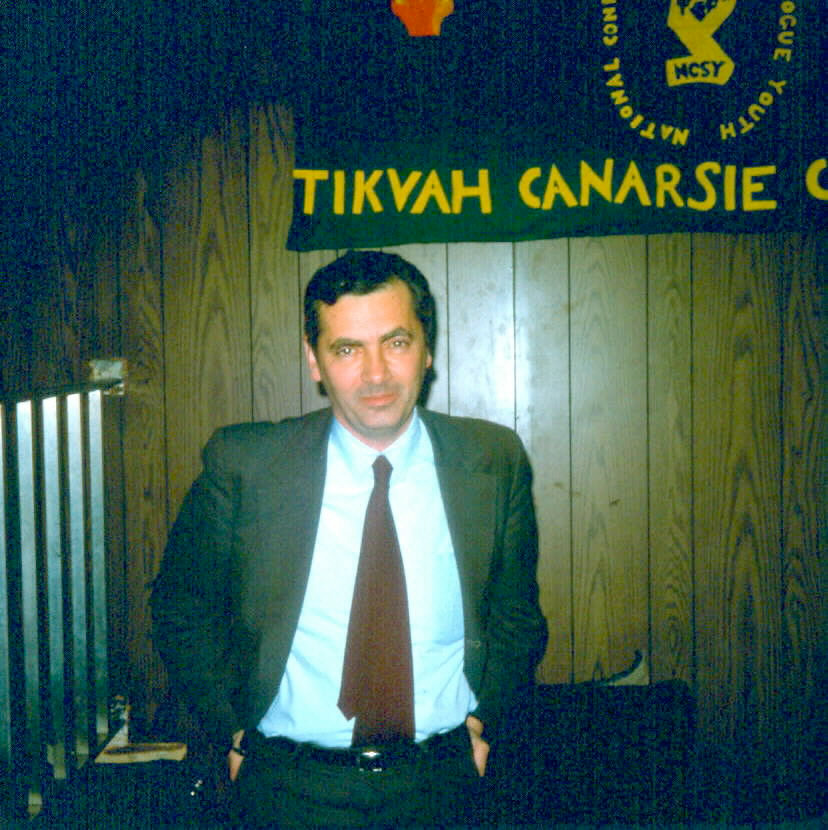
In the U.S., on the other hand, many representatives and supporters of the Black Power movement have succeeded in pursuing careers in universities and colleges. Their integration has been so successful and enduring that the rhetoric and analytical criteria that emerged in a climate that can be precisely defined in terms of social history now play an important role in the traditionally left-wing humanities. What was discussed in the anti-imperialist international as Triple Oppression Theory is now being revisited as Intersectionality Theory, and what was then called the Tricontinent is now the Global South – not a geographical, but a political category. Forms of action and protest in the Free Gaza! movement are also reminiscent of the 1970s, where they are digitally mediated, and not just since the widespread return of the Kufiya as a symbol of the struggle of oppressed peoples. And (Israel-related) antisemitism, which has always maintained an intimate relationship with militant antisemitism, is also back and does not seem to pose a problem for large sections of the US left.
The exuberant and all too often anti-Jewish protests at American universities can thus be explained against the backdrop of the identity-political radicalization of the civil rights movement in the course of the 1970s and its academic aftermath. However, the euphoric reception they have now received throughout Europe and in significant parts of the activist-academic milieu in Germany is frightening. Patterns of interpretation and forms of action are being adopted here whose obvious naivety is fed by a sphere of experience that is fundamentally different from that of Europe, especially Germany. In the United States, assimilation actually offered Jews the opportunity to be largely spared from discrimination, even though antisemitism was and is widespread. In Europe, on the other hand, the integration of Jews through assimilation was largely successful, but it was reversed in a perfidious way. Completely defenseless, European Jews were at the mercy of a racialization that had only one goal: to identify all Jews, find them, and send them to the “Final Solution”.
Kahane, who was born in Brooklyn in 1932 and experienced none of this directly, saw this. His militant program was identified by regular references to Auschwitz and the pogroms in Eastern Europe as a guide to Jewish self-defense and in the service of Jewish life, which he also saw under constant threat in America. For Black Power activists, however, the situation was different. The Jews who had made it to America had been rescued by the very nation that oppressed Black people as a group and from whose wealth they remained largely excluded, despite legal equality, even though they too had paid a considerable blood toll in the fight against the Third Reich and the Axis powers. They may have been persecuted and nearly exterminated in Europe, but in America Jews had become white, or at least could become white. The Jewish Defense League thus appeared as a group of white thugs whose behavior was likely to evoke memories of the lynch mobs of the South – an understandable point of view, since nothing remotely comparable to the racial hatred experienced by Black Americans,and to which they were still subjected in the 1960s, had ever happened to Jews in the U.S.
So while assimilation not only failed to protect European Jews from discrimination in the long term, but came to a terrible end in the death camps, it succeeded so well in America that one could believe that antisemitism was nothing more than a harmless variant of “inner-white” racism. In the land of the Shoah, where there is hardly any Jewish life left, this seems utopian, and one would like to believe it. And yet we should know better. Against the background of what happened here, the fresh wind blowing from the West should be met with extreme skepticism. It is not the German Guilt of which there is so much talk today[6] that obliges us to preserve the concept of antisemitism as it was paradigmatically developed in the critical theory of Adorno, Horkheimer and others, or by Jean Amery, and to defend it against US-style anti-racism where necessary, but rather the European experience: “it has happened, and therefore it can happen again”. (Primo Levi).
Christian Voller
Christian Voller, born 1980 in Kronberg im Taunus, is an assistant professor at Leuphana University, Lüneburg. He has published numerous articles on 20th-century philosophy of technology and the history of historical materialism.
Notes
| 1 | Baldwin, James, “Negroes Are Anti-Semitic Because They‘re Anti-White” (Orig.: New York Times Magazine, 9. April 1967), in: Idem., Collected Essays, published by Toni Morrison, New York, Literary Classics of the United States, 1998, pp. 739-748, here p. 744. |
| 2 | Ibid., 745 |
| 3 | Cruse, Harold, The Crisis of the Negro Intellectual (1967), The New York Review of Books, New York 2005, p. 498. |
| 4 | Ibid., S. 482 |
| 5 | As was remarked sarcastically by Robert Chrisman: „A communist, Jewish, Zionist liberal, integrationist conspiracy has smothered black culture for sixty years, says Cruse.“ Chrisman, Robert, The Crisis of Harold Cruse, in: The Black Scholar, November 1969, Vol. 1, No. 1, The Culture of Revolution, pp. 77-84, here p. 79. |
| 6 | The slogan “Free Gaza from German Guilt” first came to wider attention in the context of the early-criticized documenta 15 and has since become an integral part of pro-Palestinian protest culture in Germany and beyond. It claims that a specifically German sense of guilt over the Shoah led the Federal Republic to enter into an unbreakable alliance with Israel, as a result of which the Palestinians, as the “victims of the victims,” became the object of an oppression in which German guilt was perpetuated. The slogan has been sharply criticized in Germany, including and especially by the left, because it takes up and varies a topos that has occupied a central place in the rhetorical repertoire of the extreme right since the 1950s, namely the demand for an end to the so-called “cult of guilt”. This demand has recently been vehemently reasserted by the “völkisch” (nationalist-racist) wing of the Alternative for Germany (AFD), but it dates back to the founding of the New Right in the 1950s. But the talk of German Guilt is also wrong, because it addresses a diffuse, subjective feeling of guilt and thus levels the objective experience of the Shoah, including the responsibility that results from it – by no means only for the Federal Republic of Germany. |


